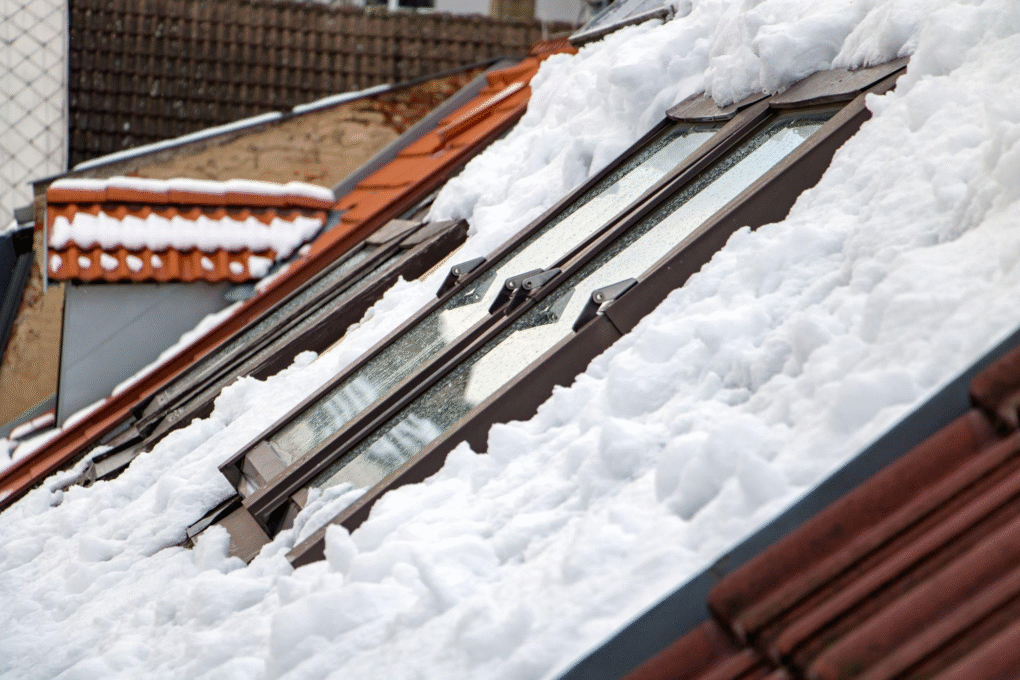
Attic frost occurs when warm, moist air escapes into the attic during cold weather, leading to ice buildup. As temperatures rise, this frost melts, causing water damage and potential structural issues. Proper attic ventilation and insulation are key to preventing moisture buildup in attics. By addressing these factors, homeowners can protect their property from costly repairs and maintain a healthier living environment. Understanding the causes of attic frost is the first step toward effective prevention.
Table of Contents
- Understanding Attic Frost: Why It’s a Growing Concern in Colder Climates
- The Science Behind Moisture Migration and Ice Buildup in Attics
- Signs of Attic Frost Damage: What Homeowners Should Watch For
- Preventing Attic Frost: Practical Steps for Improved Ventilation and Insulation
- Final Thoughts on Combating Attic Frost and Moisture Buildup
As winter tightens its grip, many homeowners overlook a silent intruder that can wreak havoc on their homes: attic frost. This icy buildup forms when warm, moist air escapes into the colder attic space, creating layers of frost that melt during warmer spells. The result? Water damage, stained ceilings, and potential structural harm. For regions with harsh winters, understanding how to prevent moisture buildup in attics becomes essential for maintaining a safe and resilient home.
Addressing this issue starts with proper measures such as improved ventilation and insulation. Consulting experts who specialize in home inspection attic in Calgary can provide valuable insights into early detection and prevention. By tackling these challenges proactively, homeowners can safeguard their properties from costly repairs and long-term damage.
Understanding Attic Frost: Why It’s a Growing Concern in Colder Climates
Attic frost is more than just an inconvenience; it’s a symptom of deeper issues within a home’s structure. During prolonged cold spells, warm air from living spaces rises and infiltrates the attic. When this moist air encounters freezing temperatures, it condenses and forms frost on surfaces like roof sheathing and trusses. Over time, this frost accumulates, creating a hidden hazard that can compromise your home’s integrity.
The melting process is where the real damage begins. As temperatures rise, the accumulated frost melts, leading to water dripping onto insulation, ceilings, and even walls. This phenomenon, often referred to as “attic rain,” can cause significant damage, including stained drywall, weakened structural components, and mold growth.
Regions with harsh winters are particularly vulnerable, making it critical for homeowners to address the root causes of moisture buildup in attics. Several factors contribute to the formation of attic frost:
- Poor Ventilation: Inadequate airflow prevents moisture from escaping the attic, allowing it to settle and freeze.
- Insufficient Insulation: Gaps or thin layers of insulation enable warm air to escape into the attic space.
- Excessive Indoor Humidity: High humidity levels in the home increase the amount of moisture that can migrate upward.
By understanding these factors, homeowners can take proactive steps to mitigate risks and protect their properties from costly repairs. Proper attic ventilation and insulation upgrades are essential strategies to combat this growing concern.
The Science Behind Moisture Migration and Ice Buildup in Attics
Understanding the science of moisture migration is key to addressing attic frost. Warm air, laden with humidity, naturally rises from living spaces into the attic. In colder climates, this warm, moist air quickly cools upon contact with freezing surfaces such as roof sheathing or trusses. When temperatures drop below freezing for extended periods, this process leads to significant ice buildup.
This phenomenon is exacerbated by Alberta’s harsh winters, where prolonged cold snaps create ideal conditions for frost accumulation. As frost forms, it remains dormant until warmer temperatures cause it to melt, creating what many refer to as “attic rain.” This melted frost can seep into insulation, ceilings, and walls, leading to water damage and mold growth.
Effective attic ventilation plays a crucial role in preventing this cycle by allowing warm, moist air to escape before it condenses.
How Ventilation Works to Combat Moisture
Attic ventilation operates on the principle that heated air naturally rises. A well-designed system incorporates two types of vents: intake vents and exhaust vents. Intake vents, typically located along the lower edges of the roof, draw in cooler air, while exhaust vents near the peak allow warm air to escape. This continuous airflow helps regulate attic temperature and reduces the risk of moisture buildup.
- Intake Vents: Essential for managing incoming air and reducing humidity levels.
- Exhaust Vents: Critical for expelling warm, moist air before it can condense.
- Balanced Systems: Properly sized vents ensure consistent airflow, minimizing ice formation.
Without adequate ventilation, the risk of ceiling condensation issues increases significantly. Homeowners should prioritize regular maintenance of roof vents and other components to prevent these costly problems.
Signs of Attic Frost Damage: What Homeowners Should Watch For
Detecting attic frost early can prevent extensive damage to your home. One common indicator is water stains on ceilings or walls, often appearing after a cold spell followed by warmer weather. These stains result from melted frost dripping into living spaces, creating what experts refer to as “attic rain.” In severe cases, you may notice peeling paint, warped wood, or even mold growth in affected areas.
Other warning signs include damp or clumped insulation, which reduces its effectiveness and exacerbates moisture buildup in attics. If left unaddressed, these issues can compromise the structural integrity of your roof and ceilings. Regular inspections are crucial for identifying these problems before they escalate.
Key Indicators of Attic Frost Damage
- Water Stains: Discoloration on ceilings or walls caused by dripping water from melted frost.
- Mold Growth: Visible mold or musty odors indicate prolonged moisture exposure.
- Damp Insulation: Wet or compacted insulation loses its thermal efficiency, increasing energy costs.
- Peeling Paint: Moisture infiltration causes paint to bubble or peel, signaling underlying issues.
Homeowners experiencing these symptoms should consider professional assistance to assess and address the root causes. By taking action early, you can avoid costly repairs and secure long-term protection for your property.
Preventing Attic Frost: Practical Steps for Improved Ventilation and Insulation
Preventing attic frost requires a combination of strategies aimed at reducing moisture migration and improving airflow. One of the most effective solutions is upgrading your attic’s ventilation system. Proper attic ventilation involves two key components: intake vents and exhaust vents. Intake vents allow cooler air to enter the attic space, while exhaust vents release warm, moist air before it can condense.
Another critical step is ensuring your ceiling insulation is adequate and properly installed. Gaps or insufficient insulation can allow warm air from living spaces to escape into the attic, contributing to frost formation. Adding an insulation top-up or using materials like spray foam can significantly reduce heat loss and prevent moisture from entering the attic.
Additional Measures to Prevent Attic Frost
- Bathroom Vent Upgrades: Redirect bathroom fans to vent outside instead of into the attic to reduce humidity levels.
- Insulation Removal and Replacement: Remove old, damp insulation and replace it with high-performance options to maintain efficiency.
- Roof Vent Maintenance: Regularly inspect and clean roof vents to secure unobstructed airflow.
By addressing these areas, homeowners can create a robust defense against attic frost and its associated risks. Taking a proactive approach not only protects your home but also enhances its energy efficiency.
Final Thoughts on Combating Attic Frost and Moisture Buildup
Addressing attic frost is essential for protecting your home from the damaging effects of moisture buildup in attics. By improving ventilation, upgrading insulation, and addressing humidity sources, homeowners can significantly reduce the risk of ice accumulation and water damage. These proactive measures not only safeguard your property but also enhance energy efficiency and indoor comfort.
Understanding the causes of attic frost empowers homeowners to take meaningful steps toward a healthier, more resilient home. With the right strategies, this hidden winter hazard can be effectively managed.
